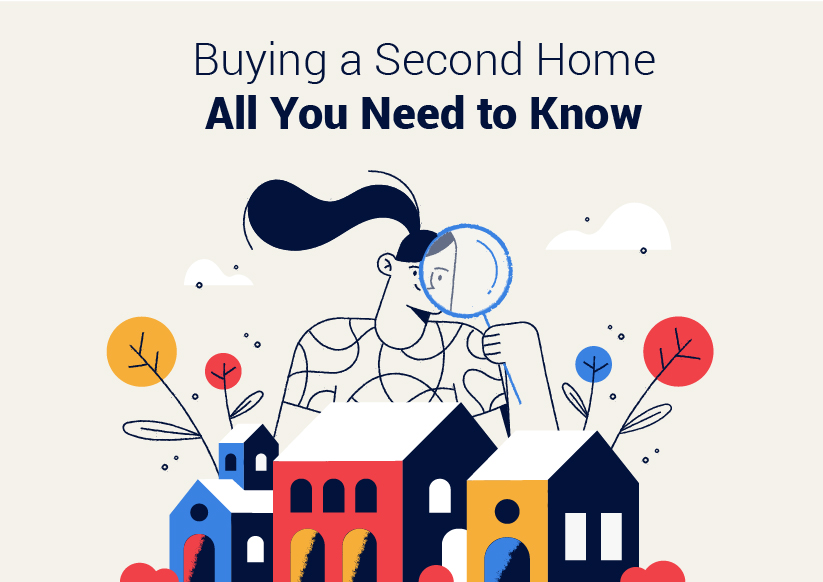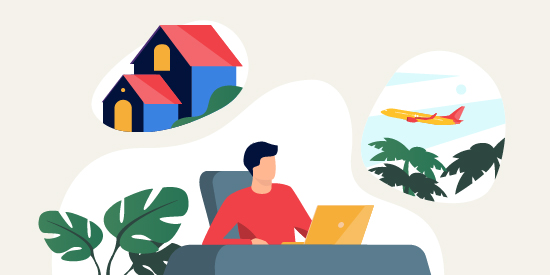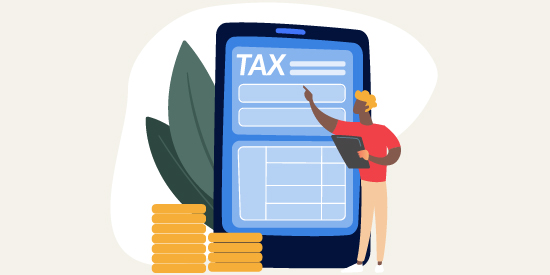Buying a Second Home – All You Need to Know

Whether you’re looking to get a house at your favourite holiday location, a commuter flat in the city for work, or seeking a property investment to generate income, having a second home or apartment can be rewarding from both a lifestyle and financial perspective.
Owning a second home in addition to a primary residence can be a great way to put savings to use, and if the property appreciates in value, it can also be an asset for relatives or children, or you could even develop the second home ready for sale.
While investing in a second home can be an appealing prospect, there are a few things to consider to ensure finding and buying your second home runs smoothly. Here’s our guide to buying a second home in the UK.
How Many People in the UK Own a Second Home?
In 2019 the number of second homeowners in the UK reached a high of 495,000, a 30% increase from 2014. According to the Guardian, the total wealth generated from second homes, buy-to-let investments and overseas property in 2019 reached £941bn. Recently pent up demand for housing as a result of the COVID-19 pandemic, the resulting national lockdowns and more people working remotely, has prompted a higher number of people to consider out-of-city living in the countryside or suburbs and away from the city. With little international travel, for some second homes have offered an escape, and the economic turmoil from the pandemic has nudged more people to consider property ventures as a means to drive supplemental income.
According to data from 2020, around 5.6% of the total property sales in the UK were identified as second homes. This figure provides valuable insight into the widespread ownership of second homes in the UK and emphasizes that a significant proportion of property transactions in the country involve the purchase of secondary residences, which can have a significant effect on the housing market.

What are the Benefits of Buying a Second Home?
Securing a second property can make a great long-term investment, and by investing in the right property type and location, its value can rise to give you a decent return. Another alternative is to rent the second property out to tenants, which is also a way to cover the mortgage and possibly generate extra income depending on the rental fee. If you are seeking a holiday home, there is also the possibility to rent it out occasionally when not in use.
This can help to offset the cost of buying a second property and maybe even allow you the freedom to think about getting another one. Apart from the financial gains, buying a second home also provides a great way to enjoy time away from your usual surroundings.
Are There Any Drawbacks to Buying a Second Home?
While most of the time owning a second home brings a host of benefits, there are a few things to consider to ensure that owning a second home is the right decision for you. Firstly, getting a mortgage can be slightly more complicated than with just one property as lenders tend to have more stringent criteria.
Secondly, you need to consider the ongoing costs associated with owning a property such as mortgage repayments, tax, and maintenance. This can be difficult to manage if your budget is limited. Finally, you may find that it is difficult to rent out the property consistently enough to cover your costs if you chose a less popular location. This could lead to financial strain if you are not able to make up for any shortfall.

Getting the Right Type of Mortgage for a Second Home
Depending on what you plan to do with the property will determine the type of mortgage you need for a second home. Here are some of the main mortgages available:
A Buy-to-Let Mortgage for a Second Home
A buy-to-let mortgage is for a second property that you intend to rent out and usually comes with a deposit of 25 – 40 % of the property price. Interest rates will usually be higher than for a first house and the level of the buy-to-let mortgage will depend on the amount of rental income the property will generate. Lenders will want to see rent is adequate to cover the mortgage interest and any possible future rate rises.
Moneyfacts data shows that in November 2022, the average fixed-rate buy-to-let mortgage rate reached its highest point at 6.76%. However, since then, the rate has decreased every month and stood at 5.91% at the beginning of February 2023. Although rates are typically influenced by the Bank of England base rate, the buy-to-let mortgage rates have moved in the opposite direction.
Despite the Bank’s expected rate increase next month, the buy-to-let mortgage rates may not be affected as lenders’ confidence in the market has improved in recent months. Therefore, those looking to remortgage or invest in a new buy-to-let property can expect a brighter outlook.

A Holiday-Let Mortgage
If you are purchasing a holiday home and have plans to rent it out for at least 210 days per year, you will usually apply for a holiday-let mortgage. A furnished holiday home let out for 210 days per year is classed as a business, meaning you can deduct expenses from rental income before tax assessment, including interest paid on the mortgage. Lenders will require a deposit of around 25% of the property value and will look to whether the property will be able to provide a rental income typically between 125% and 145% of the interest payable on the mortgage. Be aware that not all lenders offer a mortgage on short-term lets like Airbnb, although some specialist lenders will.
In October 2022, there were 173 mortgages available for those wanting to become holiday let landlords, but now, the number has increased to over 400. The number of options for holiday let mortgages has more than doubled since then. Although, what investors should keep in mind are the new rules which will come into force this April.
The rules are – Holiday lets must be rented for a minimum of 70 days per year to qualify as a holiday let. Homeowners will be required to show proof of their lettings and meet certain criteria to be eligible for business rates relief. The regulations aim to safeguard legitimate investors.
Second Home Mortgage
For a second home for personal use or a holiday home you do not plan to rent out, you will need a regular mortgage. Often the lender will ask for a larger deposit than for a first property at around 15% of the property’s value. If you initially get a mortgage under a second home for personal use, but then wish to rent it out as a holiday let, you may need to apply for “consent to let” by the mortgage lender which may involve a fee or higher interest rates. If you fail to get consent, you may have to remortgage which can come with additional costs, so it’s always wise to ensure you do the appropriate research on getting the right mortgage on a second home.
The previous year proved to be a tumultuous period for mortgages. Mortgage rates had already been on the increase due to high inflation, and the lack of funded tax cuts further caused the rates to soar.
Nevertheless, many experts predict that average mortgage rates will stabilize between 4 and 5 per cent this year. These projections are based on the assumption that inflation has peaked and that the Bank of England will slow its base rate hikes accordingly.

Can You Get a Mortgage on a Second Home if You Have an Existing Mortgage?
Even if you are still repaying the mortgage on your first home, you can still get a mortgage on a second home. You will need to prove to the lender that you can afford payments on the first and second home, give any details of likely rental income where appropriate and usually have a good credit score to be considered for a second mortgage. Typically a deposit for a second mortgage may be slightly larger at around 25% and you may have to pay higher interest rates and fees.
Do I Need to Pay Stamp Duty When Buying a Second Property?
When purchasing a secondary residence, whether for personal use or buy-to-let, a stamp duty will apply. For second properties there is a 3% extra surcharge on top of the usual rate. While the first stamp duty is exempt for primary residences under £125,000, it still applies to second homes.

How Does Buying a Second Property Affect Taxes?
Similar to a first home, a secondary residence is subject to capital gains tax when it is sold. The growth in value from the purchase price is taxed – known as “chargeable gain” – your gain minus any private residence relief you may be eligible for assuming the property has increased in value. Generally there are two brackets for capital gains tax. For basic rate taxpayers the capital gains tax is 18%, for higher rate taxpayers it’s 28%.
Buying a second home can make a sound financial investment and offer many lifestyle benefits. This guide should provide you with a good introduction to mortgage requirements on a second home and taxes and applicable fees. To find out more about purchasing a second home in the UK, get in touch with us today.

